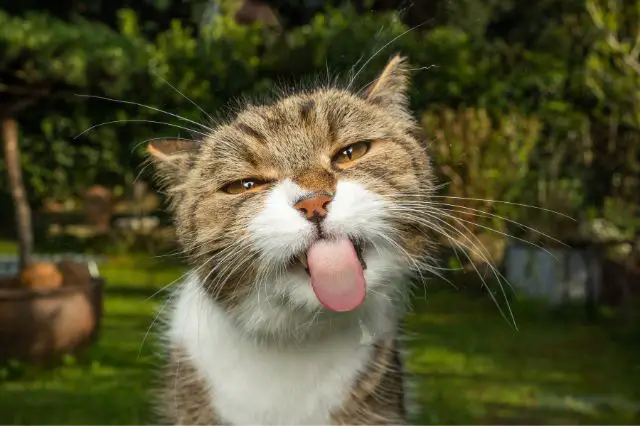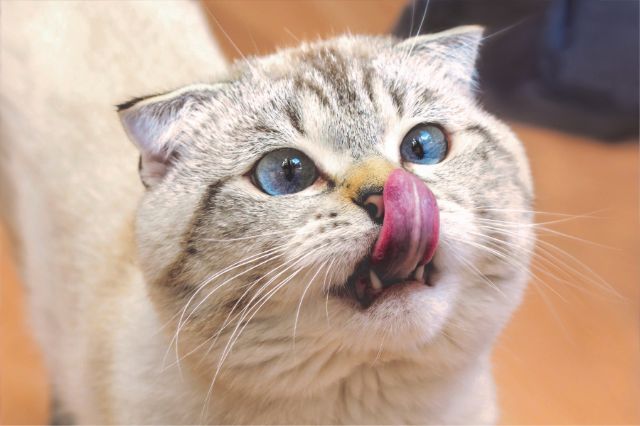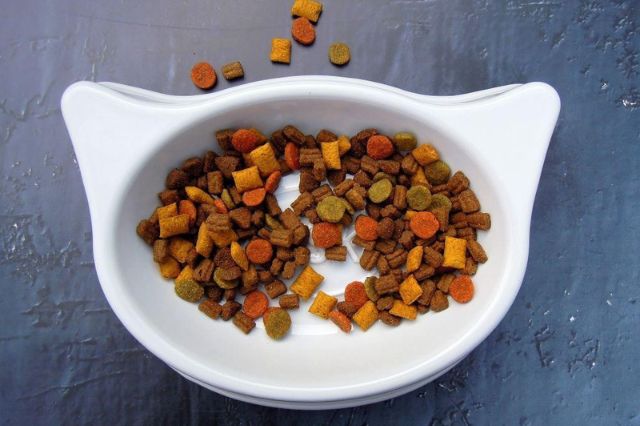Pets
8 Ways to Manage Your Pet’s Health at Home

Are you looking for ways to keep your pet in the pink of health? Do you worry about how to take care of your pet at home? Well, if this is what you are thinking, you’ve indeed landed up in the right place.
Below we have come up with eight super ways to keep your pet healthy and fit! So, without any further ado, let’s check out what the top ways are:
1. Correct Nutrition
Food is the primary thing we need to take care of – be it for yourself or your pet. Nutrition not only keeps us healthy but also ensures we are fit. It helps in increasing our lifespan and much more.
So, you have to make sure the nutritional needs are fulfilled with quality food. And for that, you need to make sure you speak to the vet to provide your pet with the proper nutrients. Once you are sure about the nutrients, you can easily avail yourself of the quality pet food delivery service, convenient and fresh.
2. Exercising
Alongside the right amount of nutrition, exercising is equally important. That will ensure your pet is maintaining the right weight. So, take your pet out for walks, hiking, swimming, and more. Also, try playing fetch with your pet. This will keep him/her fit and active.
Apart from that, you need to ensure your pet is taking care of their mental stimulation. Just like you have to take care of your baby’s cognitive development, you have to do the same with your pet as well. Make sure they are given the right toys that will help them become more intelligent.
3. Health Checkups
Vets currently perform a yearly health examination where the pet goes through several screenings, which helps in early disease detection. So, make sure your pet is taken to the vet regularly for checkups.
4. Grooming
Pets require regular grooming to remain clean and also protect their fur. No matter how much you look at Youtube tutorials to learn how to groom your pet, a professional’s job always stands out. So, if you want to manage your pet and keep them healthy, make sure you are regularly grooming them.
5. Training
When you are a new parent, it is natural you will find it difficult to manage your pet at home. In that case, along with your pet, you would also have to take training. Through this, you will make sure your pet learns healthy habits and implements them throughout life.
6. Treats for Good Behavior
This is something your trainer must have told you already, but we thought of just giving you a gentle reminder. Pets are just like the other kid in your house. So, when your pet conducts good behavior, make sure you give the treat to encourage them. Plus, you are informing them that is something good they have done.
7. Love & Affection
Developing a great bond with your little pooch is always great. They always look for their master’s attention and crave the love they usually don’t get at the place from where you get them. So, give them cuddles, back and chest rubs, play with them, and soon you’ll see how close they become. And this becomes a win-win situation, as you wouldn’t have to scold them when they are about to do something wrong. Only a slight shout is enough to keep them under control.
8. Neuter/Spaying
This is something every pet owner must pay heed to. You can save your lovable little pet from several diseases like cancer and more. Moreover, neutering or spaying can increase your pet’s longevity as well.
Plus, you will be able to curb all the unwanted behaviors your pet might be doing through this method. So, make sure you spay/neuter your pup as soon as you get them or at the right time. The ideal way is to speak to a vet to know the right time.
Final Thoughts
As we come to the end of our blog today, we hope you know how to keep your pet well and in optimal health. So, go ahead and use these ways, and you’ll see yourself managing your pet just like a pro.
Pets
A Comprehensive Guide to Ensuring Your Cat’s Well-being


Cats hold a special place in our hearts, embodying companionship, comfort, and joy. As devoted pet owners, it’s our responsibility to safeguard their happiness and health. Here’s an extensive manual covering the essentials to keep your beloved feline content and in optimal condition.
Nutrition
The foundation of a cat’s well-being lies in its diet. Opt for premium dry cat food that meets their specific nutritional requirements, ensuring a balance of proteins, vitamins, and minerals. Consulting your veterinarian for personalized dietary advice based on your cat’s age, weight, and activity level is paramount to their health.
Hydration
While cats may not exhibit a strong thirst drive, adequate hydration is crucial for their health. Make sure your cat has access to fresh water at all times. You should also consider investing in a cat fountain to draw them into drink more.
Regular Veterinary Check-ups
Routine veterinary visits are indispensable for monitoring your cat’s overall health and addressing any potential concerns promptly. Vaccinations, parasite control, dental care, and periodic screenings are integral components of preventive healthcare for cats.
Safe Environment
Creating a secure and enriching environment is vital for your cat’s well-being. Eliminate potential hazards such as toxic plants and small objects that could be ingested. Secure all windows and balconies to prevent accidents and furnish your home with cozy hiding spots for your cat to retreat to when they desire some privacy.
Exercise and Play
Physical activity is essential for maintaining your cat’s health and preventing obesity. Engage them in interactive and fun play sessions using toys like feather wands, laser pointers, or catnip-filled toys. Rotate toys frequently to keep them engaged and mentally stimulated.
Scratching Posts
Scratching is a natural behavior for cats that aids in claw maintenance and territory marking. Provide scratching posts or pads in various materials to suit your cat’s preferences, strategically placing them around your home to encourage use and protect your furniture.
Grooming
Regular grooming keeps your cat’s coat glossy but also strengthens your bond with them. Brush your cat’s fur regularly to remove loose hair and prevent matting. Additionally, trim their nails, clean their ears, and brush their teeth to maintain their overall hygiene.
Social Interaction
Despite their independent nature, cats crave social interaction and companionship. Dedicate quality time to cuddling, petting, or engaging in interactive play with your cat. If you’re away for extended periods, consider adopting another cat as a companion or providing enrichment activities to stave off loneliness.
Respect Their Space
Cats value their personal space and may become stressed if they feel overwhelmed or intruded upon. Respect their boundaries at all times and allow them to seek solitude when needed. Avoid imposing interactions or handling them roughly, as this can lead to fear or aggression.
Monitor Their Behavior
Stay attuned to changes in your cat’s behavior, as they can signify underlying health issues or stress. Watch for signs such as lethargy, changes in appetite, excessive grooming, or litter box avoidance. Speak to your veterinarian promptly if you notice any concerning symptoms.
Conclusion
In summary, ensuring your cat’s happiness and health entails a combination of proper nutrition, routine veterinary care, mental stimulation, and a nurturing environment. By prioritizing their well-being and providing them with the essentials they need, you can foster a long-lasting bond and a fulfilling life for your cherished feline companion.
Pets
The Complete Guide to Cats: Unveiling the Mysteries of Our Feline Friends


With their intriguing behaviors and captivating charm, cats have mesmerized humanity for generations.
Whether you’re a seasoned cat owner or considering inviting one into your home, grasping the nuances of these enigmatic creatures is paramount for fostering a harmonious relationship.
Let’s embark on an exploration of everything essential to know about cats, covering their dietary requirements, behavioral tendencies, healthcare needs, environmental enrichment, and the art of building a strong bond.
Nourishing Your Feline Friend
Understanding a cat’s dietary needs is fundamental to their well-being. As obligate carnivores, cats rely on animal-based proteins for essential nutrients. Opt for high-quality cat food labeled as “complete and balanced,” tailored to their age, activity level, and health status.
Whether you choose commercial options or explore homemade or raw diets, consulting with a veterinary professional ensures your cat’s nutritional needs are met.
Can cats eat vegetables? While cats are obligate carnivores, primarily requiring meat in their diet, some cats may enjoy small amounts of certain vegetables as an occasional treat or source of fiber.
Decoding Feline Behavior
Cats possess a repertoire of behaviors that may seem inscrutable at first glance. Delve into their world by deciphering common behaviors:
Purring: While often associated with contentment, cats may also purr when anxious or seeking comfort. Observing their body language aids in interpreting their purrs.
Kneading: A throwback to kittenhood, kneading signifies relaxation and contentment.
Scratching: Cats scratch to maintain claw health and mark territory. Offer appropriate scratching posts to redirect this behavior.
Hunting Instincts: Engage your cat’s natural instincts with interactive play, satisfying their predatory urges in a safe environment.
Prioritizing Healthcare
Regular veterinary check-ups are pivotal for maintaining your cat’s health. Schedule annual wellness exams, stay current on vaccinations, and administer parasite preventatives as advised. Vigilance for subtle changes in behavior or appetite can signal underlying health issues, warranting prompt veterinary attention. Taking out pet insurance can also help to keep the costs down.
Crafting an Enriching Environment
Enhance your cat’s surroundings to promote mental and physical stimulation:
Vertical Space: Cats relish high vantage points for security and observation. Provide cat trees or shelving to satisfy their vertical instincts.
Toys and Play: Rotate toys regularly to prevent boredom, engaging your cat’s hunting instincts with interactive play sessions.
Hideaways: Offer cozy retreats like beds or boxes, allowing your cat to indulge in solitary relaxation.
Fostering a Strong Bond
Cultivating a deep connection with your cat requires patience and mutual respect. Allow your cat to dictate the pace of interaction, reinforcing positive behaviors with treats and praise.
Dedicate quality time each day to bonding activities, whether through grooming, play, or quiet companionship. Consistency and understanding lay the groundwork for a fulfilling relationship built on trust and affection.
Addressing Unique Needs
Each cat is an individual with their own quirks and preferences. Some cats may have specific dietary requirements due to allergies or medical conditions, while others may exhibit behaviors that require specialized attention.
Observing and understanding your cat’s unique needs allows you to tailor their care accordingly, ensuring their physical and emotional well-being.
Managing Multi-Cat Dynamics
For households with multiple cats, navigating social dynamics is essential. Introducing new cats gradually, providing separate resources such as litter boxes and feeding stations, and promoting positive interactions through play and enrichment activities can help foster harmony among feline housemates.
Additionally, monitoring for signs of conflict or stress and addressing them promptly can prevent escalated tensions and maintain a peaceful coexistence.
Understanding Cat Communication
Cats communicate through a combination of vocalizations, body language, and scent marking. Familiarizing yourself with their repertoire of signals enables you to better interpret their needs and emotions.
From the subtle flick of a tail to the intensity of a meow, paying attention to your cat’s cues enhances your ability to respond appropriately and strengthen your bond.
Nurturing Senior Cats
As cats age, their needs evolve, requiring adjustments to their care routines. Senior cats may experience age-related ailments such as arthritis or dental issues, necessitating specialized veterinary care and modifications to their environment.
Providing comfortable bedding, easy access to food and water, and gentle exercise tailored to their mobility levels supports their health and quality of life in their golden years.
Conclusion
Cats continue to captivate and intrigue us with their mysterious allure, inviting us into a world of endless fascination and companionship. Embracing cat care’s multifaceted nature involves learning, adaptation, and a deep appreciation for the bond we share with these remarkable creatures.
As you embark on your journey with your feline companion, remember that understanding and patience are the cornerstones of a fulfilling relationship.
By attending to their needs, nurturing their well-being, and cherishing the moments of connection, you embark on a lifelong adventure filled with love, laughter, and the timeless magic of cats.
Pets
How Can Purchasing Royal Canin Cat Food Be a Great Idea?


You are a responsible pet owner. Therefore, you look for the best ways to improve the well-being of your cat. Buying Royal Canin cat food could be one of the best ways to ensure your kitten’s daily nutritional intake and give your little pal the treat he deserves. High-quality cat food can be the perfect gift for your fluffball and a way to show him your love. Moreover, the investment in your cat’s nutrition could pay for itself down the road through less expensive vet bills and increased vitality for your bundle of joy.
High-quality food options can improve your kitty’s muscular and skeletal health, maintain its claws and coat shine, and be a cost-effective avenue to monitor its weight. By buying Royal Canin cat food, your feline could develop healthily and predictably, and moments spent together could become priceless memories. High-quality cat food is carefully tested to meet the standards imposed by the relevant government authorities. But most of all, it is delicious and suitable for the needs of your fluffy companion.
Why should you invest in Royal Canin cat food? One word: Quality. Brands like Royal Canin, Pedigree, or Taste of the Wild, invest considerable amounts in the research and development of their products and have access to the best ingredients on the market. The meal options from Royal Canin can be ideal for senior dogs and pups, while the wet food offered by companies like Fancy Feast or Dine could be a real gourmet treat for your sophisticated buddy.
What Are the Cornerstones of Quality Cat Food?
For one thing, quality kibble, such as that offered by Royal Canin cat food, should be easy to digest and provide the nutritional balance necessary for the proper development of your furry companion. Cats are predatory animals, so their nutrition should be focused on proteins of known origin and feature added minerals and vitamins. Quality food can increase your feline’s energy level, improve your fluffball’s long-term well-being, and could be a helpful factor in keeping your kitty’s dental health at an optimal level.
Quality cat kibble or wet food must contain a protein source from a known source, which must come from an animal raised in Australia. And here, the options can range from chicken and fish to mutton or even sheep. The food purchased should comply with the regulations set by the Pet Food Industry Association of Australia and should contain healthy fats such as Omega-3, which have a positive effect on keratin creation.
Quality cat food is free of additives and artificial colours and should feature no added grains, as your cat cannot correctly digest them. It’s best to aim for cat kibble without many carbohydrates. And it would be best to choose a brand with experience in the Australian market, such as Royal Canin. High-quality products are ultimately characterised by consistency. And this is the main thing you should look for in your kitty’s kibble.
Should I Go for Wet Food?


The pet food market is worth over $115 billion. But when you want to buy meals for your kitty, you have two choices: kibble or wet food. Kibble is an inexpensive, shelf-resistant option found in the offerings of prominent market players. And it might be ideal if you’re interested in consistency alongside excellent price-to-quality ratios. But wet food is the way to go if you want to spoil your companion. High-quality wet food can offer a hydration boost. And it’s recommended for older cats likely to suffer from kidney problems.
Moreover, cats often prefer the taste of wet food and are more enthusiastic about their feeding times if it involves wet meals. Compared to dry kibble, wet food usually has fewer calories and is a more suitable solution for better managing your kitty’s weight. And it can also be found in an immense variety, coming from different manufacturers, using different types of meat. However, wet food is harder to store, must be eaten immediately after opening, and is usually more expensive.
How Are Dogs’ and Cats’ Dietary Requirements Different?
Cats are predatory animals, and this means their diet must be based mainly on meat of known origin. Unlike dogs, which are omnivores, cats cannot correctly digest carbohydrates. And for this reason, meals that contain them should be avoided. Furthermore, cats, unlike dogs, cannot naturally process certain amino acids, such as taurine, which should be added to their diets. A lack of taurine in their food could lead to serious health problems, ranging from heart muscle abnormalities to difficulties with night vision.
Being carnivores, cats need a higher intake of animal fats and can barely process the fibres regularly found in dog kibble. Moreover, cats cannot process Vitamin A from plants and therefore have to rely on its conversion from animal sources, which is less effective. Cats are picky eaters and may have different dietary preferences. And at the same time, they are prone to over-eating, so their food portions should be carefully balanced. From this point of view, dogs are easier to care for, and their food may be cheaper. However, dogs can be significantly bulkier than cats, and their nutritional needs may vary according to breed.
Your Cat is Precious


Your furry companion is always by your side in difficult moments. And for this reason, you are probably interested in investing in quality food that will complement your feline’s diet and efficiently provide nutritional benefits. Purchasing Royal Canin cat food could, from this point of view one of the best investments you can make, as it is an excellent way to get closer to your pet and to help him develop properly.
High-quality cat food could improve the long-term health prospects of your feline, aid his dental health, reduce vet costs, and help your fluffball keep the condition of his claws and fur pristine. Quality kitty meals can be perfect for your cat and could be the best way to show him that he is an important and beloved member of your family. And purchasing them can ultimately be one of the better financial investments your can make.
-



 Captions3 years ago
Captions3 years ago341 Sexy Captions to Fire Up Your Instagram Pictures
-



 Captions3 years ago
Captions3 years ago311 Night Out Captions for Instagram and Your Crazy Night
-



 Captions3 years ago
Captions3 years ago245 Saree Captions for Instagram to Boost Your Selfies in Saree
-



 Captions3 years ago
Captions3 years ago256 Best Ethnic Wear Captions for Instagram on Traditional Dress
-



 Captions3 years ago
Captions3 years ago230 Blurred Picture Captions for Instagram
-



 Captions3 years ago
Captions3 years ago275 Deep Captions for Instagram to Express Your Thoughts
-



 Quotes3 years ago
Quotes3 years ago222 Nail Captions for Instagram to Showcase Your Fresh Manicure
-



 Captions3 years ago
Captions3 years ago211 Laughing Captions for Instagram | Laughter Is the Best Medicine







